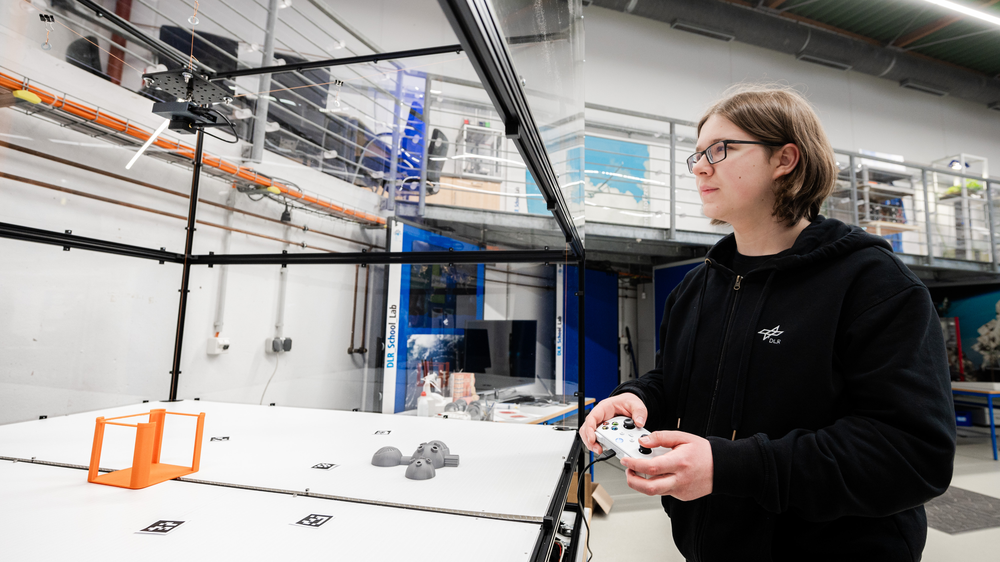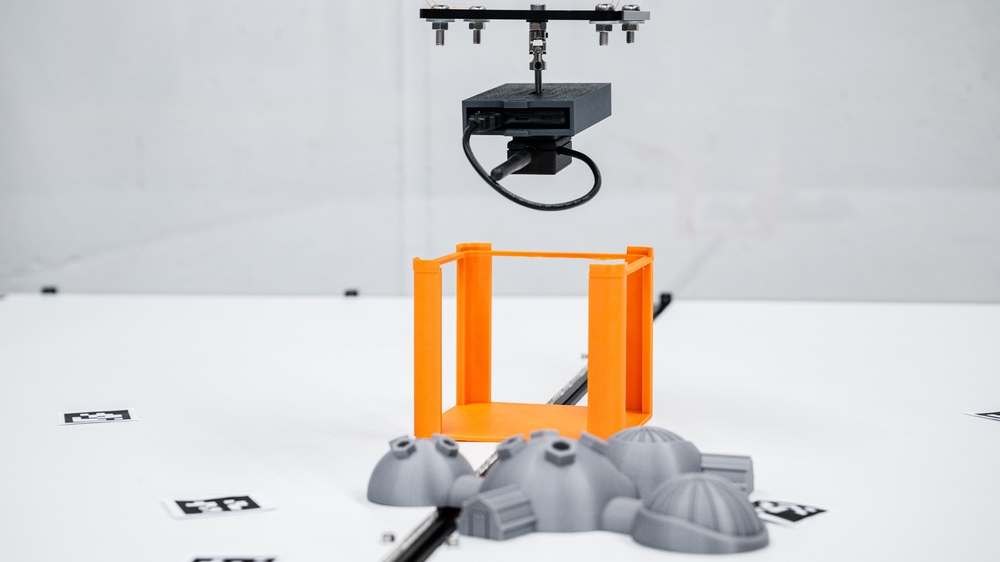New system handed over to the DLR_School_Lab



- The Institute for the Protection of Terrestrial Infrastructures has handed over a new model to the DLR School Lab in Cologne.
- It is a mini version of the MoSeRoS system developed by the institute.
- Pupils can use it to gain exciting insights into programming and robotics.
The Spidercam is familiar from soccer stadiums: a television camera travels along ropes and enables recordings to be made directly from the action. The Institute for the Protection of Terrestrial Infrastructure has adapted this concept and developed the Mobile Rope-Supported Robotic Sensor Testing System - MoSeRoS for short. It can be used to monitor large areas or detect hazardous substances.
The institute has now handed over a mini version of the large system to the DLR School Lab in Cologne. Remarkably, student Julian Lehmgrübner, who works at the institute, developed key parts of the software himself. “I like solving problems abstractly on a mathematical level,” explains the 17-year-old. The system is ideal for this: the scientists had to convert movements from the familiar three-dimensional space to four cable winches. “Implementing this was an exciting challenge that I really enjoyed,” Lehmgrübner continues.
Unlike its large counterpart, the Mini-MoSeRoS is not equipped with mobile cranes, but is attached to four fixed support towers. While the large system can be stretched over a diagonal of up to 300 meters, the working area of the Mini-MoSeRoS is 1.5 meters in length, width and height.
The students can move the platform (dolly) suspended on four ropes with various attachments within the workspace and complete tasks. For example, they can use a camera to detect objects on a patrol. The system is controlled via a web interface, which can be used to program automatic movement patterns, or freely and intuitively via a game controller.
A real-time stream from the camera enables live monitoring of the workspace and automatically recognizes simple shapes and other visual clues. “The system offers students exciting opportunities for programming, navigating autonomous systems and an insight into the kinematics of a robotic system,” explains Dr. Jan Bechert, Head of the DLR School Lab in Cologne. The first pupils will have the opportunity to work with the mini-MoSeRoS system as early as next week.
The DLR School Labs are student laboratories and offer children and young people the opportunity to discover the world of research and technology. Pupils can carry out their own experiments at 16 locations, which are thematically based on DLR research projects.
Important facts about Mini-MoSeRoS |
|---|
|
Contact
Michael Langerbeins
